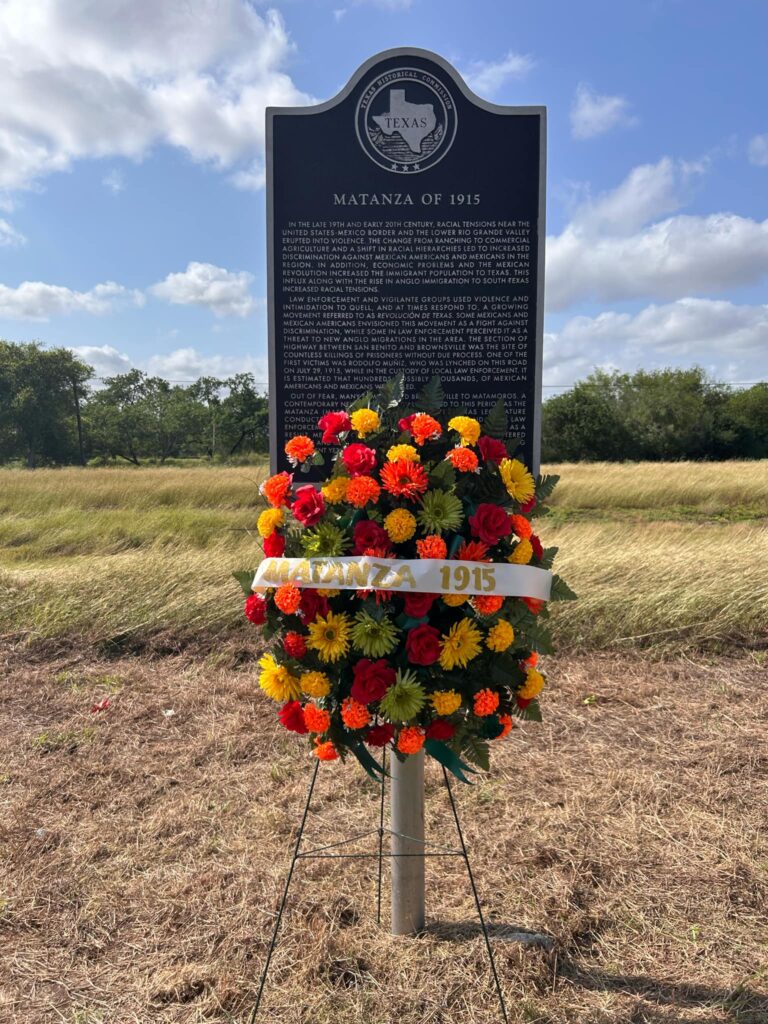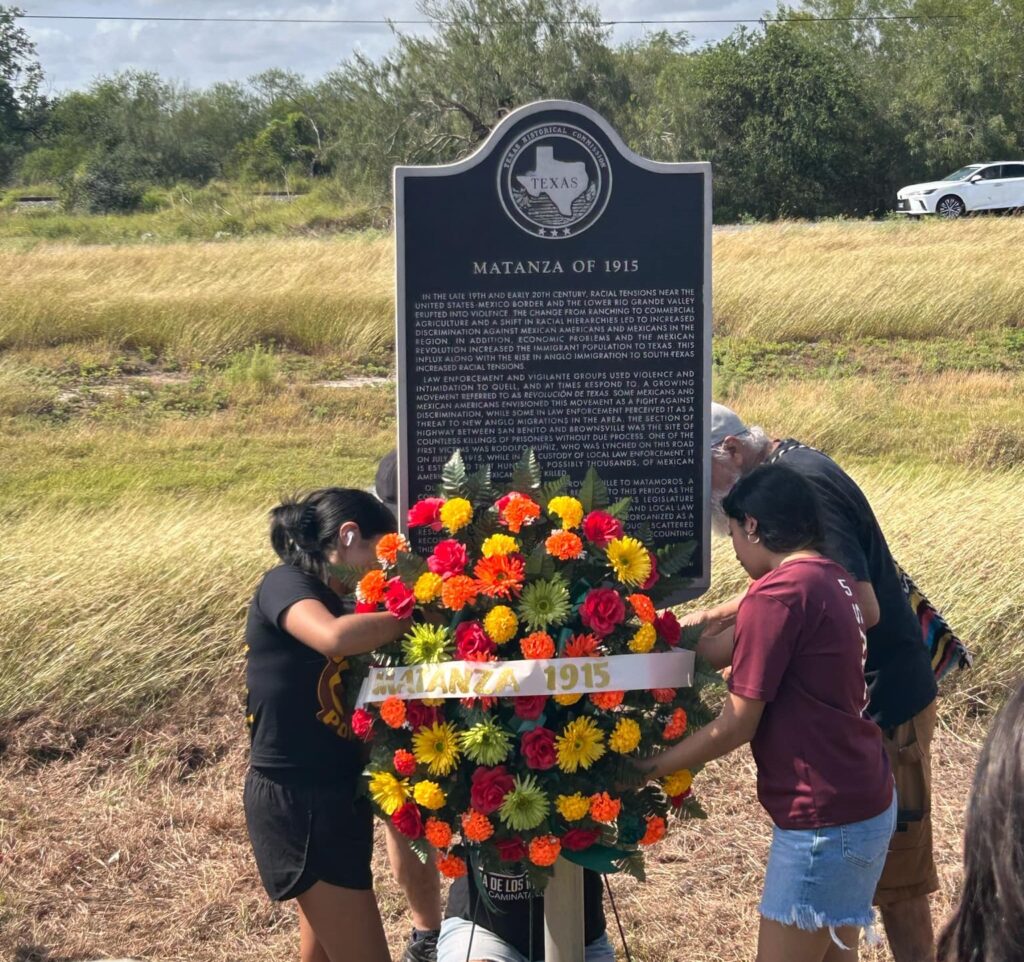By Juan Carmona, RTF Member
November 3, 2024, is going on my list as one of my proudest moments as an educator. In the past, I have had students participate in recreating important moments in history and sharing them with the public, such as readings from “The 1919 Canales Commission” highlighting the Underground Railroad in South Texas and the Civil Rights Movement in the Rio Grande Valley. However, taking my students to walk on the ground where heinous acts were committed upon our people added a different dynamic to a lesson on La Matanza.
When I returned to school after a fifteen-year hiatus, I was still working full-time in healthcare on the night shift. I worked a 12-hour shift from 7 pm to 7 am. I sometimes had trouble concentrating and retaining what I was reading and I came across an article that explained one technique that would help was standing and walking while reading. It pointed out that the very act of doing something physical while reading helped one to concentrate. As a result, the march I took my students on was a walking talking lesson that allowed them to take in the history, they were a part of. For, this was the story of their community and their ancestors.
La Caminata placed all those participating in the path that many a Mexicano(a) under the custody of Texas Rangers, at times local law enforcement, walked to their doom. They were led on horseback, sometimes in a Model T Ford (a sign of so-called progress) from the city of San Benito’s jail towards the jail in Brownsville. Somewhere in the outskirts of San Benito these “prisoners” in the words of the Rangers of the time “evaporated”. This is why the first historical marker placed by Refusing to Forget lies on the outskirts of San Benito along the expressway on the road toward Brownsville. However, the sight was also chosen because it was the site of a lynching which was documented both in local newspapers and later in the 1919 Canales Commission.
On July 28, 1915, Adolfo Muñoz, also known as “Rudolfo Muniz,” was one such prisoner who was removed from San Benito’s jail by Deputy Sheriffs Frank Carr and Daniel Hinojosa, who would go on to become a Texas Ranger. Their supposed purpose in taking possession of the prisoner was to transport him to the Brownsville jail. These 2 law enforcement officers would report that on the road outside of the city, they were stopped by a group of armed men who took the prisoner from them. The next morning Rudolfo’s body was found hanging from a tree riddled with bullets. The timing of Carr and Hinojosa’s trip was suspect because it was already nightfall when they left San Benito, a point made by lawmaker J.T. Canales in the charges he leveled at the Texas Rangers, stating, “Hinojosa who is now in the Ranger Service, and Frank Carr, a deputy sheriff of Captain Vann, starting with the prisoner by the name of Rodolfo Munoz from San Benito, only nineteen or twenty miles from Brownsville, at eleven o’clock at night, when they could have taken him in the morning, they could have taken him on the noon train, they could have taken him in the afternoon train, they could have taken him safely in an automobile in the afternoon, but they started with him about eleven o’clock and it was generally known that he was in concert with certain citizens, among them some of the leading citizens not only of San Benito but of Harlingen [its neighboring city to its west].”
What Canales is implying and was the sentiment of Valley residents was that the prisoner was removed and knowledge was given to certain individuals so that they enact their justice upon Muñoz. Sadly, occurrences like this happened throughout South Texas in the early Twentieth Century.
It is the collective memory of these events that those on the march were taking in with the walk’s combination of physical and mental stimuli made for a visceral experience for all those involved. Along the way, in the form of a blessing we were met by a minute of a light misty rain that cooled us all off but also seemed like the sky too was experiencing the remembrance of these tragic scenes that played themselves out with the clouds, stars, sun, moon, watching and preserving the stark emotions of the time. The rain then was their release covering us in a shared trauma yet nurturing us in its coolness and providing us with the energy to carry on.
As the guest speaker, I was at the center of the group of approximately 100 participants, addressing the crowd from a loudspeaker on the back of a truck. It felt a little like the farmworker protests where the back of the truck was used to make speeches and even as a stage for Teatro Campesino performances. My purpose that day on the microphone and theirs was to educate, honor memories, promote a sense of pride, and provide a framework for moving forward.
I pointed out to the audience that when thinking of La Matanza the very ground we stood on had not only been soaked by the blood of our ancestors, but it was ours, it was where we belonged. Too often the rhetoric about Mexicano(a)s leans in the direction of us not belonging here as “foreigners in our own land”, this mindset has legitimized Anglo claims to land that has been taken through violence and intimidation. My great-grandfather took his family to Mexico from the Rio Grande Valley, in the middle of the Mexican Revolution because it was safer there than in the Valley. This is the constant state of fear that the community lived in.
Additionally, when examining the impacts of this period of racialized violence we must also come to recognize its long-term effects on the local community. Not only were people killed at the hands of law enforcement and vigilantes, but we should also understand the negative influence on those left behind. A common saying of the time was that it was “easier to buy land from a widow”, with the land came wealth, power, and livelihood. As a result, you would have people going from middle-class landowners, who could provide the financial wherewithal for their children to be educated and have successful careers. Still, with land loss, loss of a spouse, loss of breadwinners, and loss of economic opportunities, this was not to be. Many would be relegated to work in the burgeoning agriculture industry that emerged from the newly acquired lands, leaving subsequent generations to struggle to lift themselves back up. It is these historical forces that one needs to understand when observing the cultural, political, and economic landscape of South Texas.

Nonetheless, the community is resilient it is still here and the time has come to embrace our past and walk forward with the knowledge that we have continued to survive through all the obstacles thrown our way. We should be proud of our community, and heritage and know that our stories deserve to be told. This is why the work of the organizers of the Caminata, Refusing to Forget, and others is so important to bring knowledge of these events into our national consciousness.
As I stood and watched my students their eyes told me that they were in the moment observing and learning, agreeing with their eyes and walking with pride. Two of them were given the honor of placing a reef upon the historical marker and others beamed with pride as they walked to the marker to read the text and be in the moment. Below are some of their reflections and comments:
“Our culture should not be forgotten” – Ernesto Lugo
“Never forget where we come from” – June Acevedo
“We have a lot of history as Mexican Americans, and our history is often overlooked. I feel that is wrong. We need to get our history into the mainstream because we have a rich culture here in the Valley and we should remember it.” – Ramiro Cantu
“Today was a day that was important because many people lost their lives at the hands of state police and we need to remember them and honor their memory with events like this.” – Victoria Lopez
“This was a great learning experience in which we all came together as a community to honor those lost and we need not only not erase our history but never forget it” – Lauren Casas
Jocelyn Espinoza “I learned alot doing this walk with my classmates, it made me understand the history of the land we live on today” – Jocelyn Espinoza
“This walk and event was different than your average museum experience it allowed you to take a deep dive into our history and learn about my culture” – Luis Fernandez
“I plan on majoring in Mexican American studies and this gave me alot more insight into the history of the RGV. This event will help me grow as a young Mexican American and help me to spread awareness of our roots and our heritage” – Annette Martinez
“Before this class [Mexiacn American History] and attending this event I was unaware of what was happening in the RGV and its history, especially the violence happening down here. This history has always been swept aside and kept from us and that is so wrong. We need to learn it and understand where we come from.” – Evelyn Salazar
“Today us an important day to remember all that has happened to our ancestors, it was nice to be there in person and learn about La Matanza. We should never forget what happened and honor our history while continuing on towards a better future” – Olga Garcia
For more information about this event and those involved see the following link on our Refusing To Forget website: https://refusingtoforget.org/adolfo-munoz-lynched/
NOTE: In this essay, I use the term Mexicano(a) for Mexicans and Mexican Americans both of which experienced the same racism and violence.



